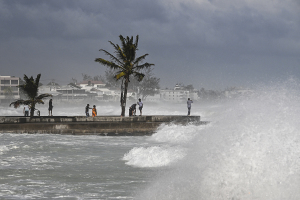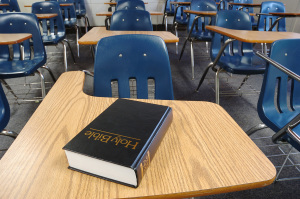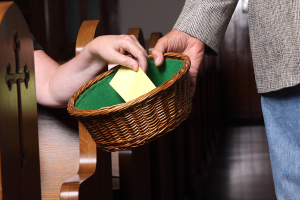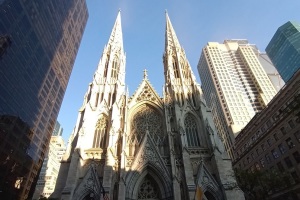Religious 'nones' now as big as evangelicals in the US, new data shows
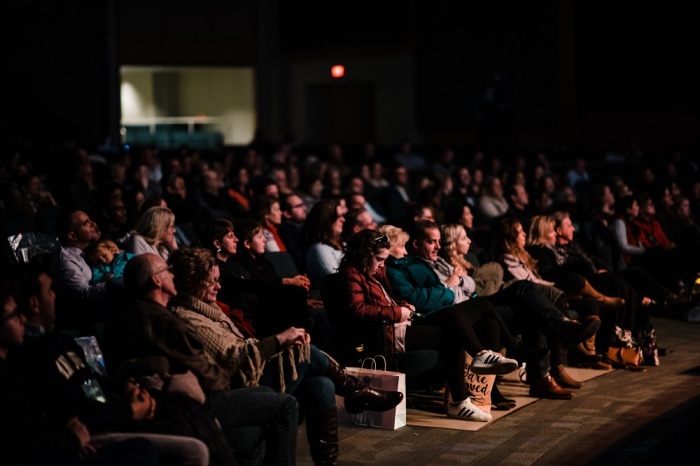
The number of religious “nones” in the United States are now statistically equal than the number of evangelicals, according to a political scientist who analyzed data from the recently released 2018 General Social Survey.
The GSS, a biennial project run by NORC (National Opinion Research Center) at the University of Chicago, was released this week and showed how America’s religious landscape continues to change.
Ryan Burge, a political science researcher at Eastern Illinois University, analyzed data from the survey. He used a Reltrad (religious tradition) classification code to compensate for the oversample of African Americans in earlier waves of data.
According to Burge’s data, 23.1 percent of those surveyed were people of “no religion,” while those who are evangelical — of any race, not just white — represented about 22.8 percent of the tally.
Despite a tiny resurgence in the 2018 data, white mainline protestants, which were once the largest U.S. religious demographic in the 1970s, were at just 10.8 percent of the tally, a far cry from 1975 when they were over 30 percent.
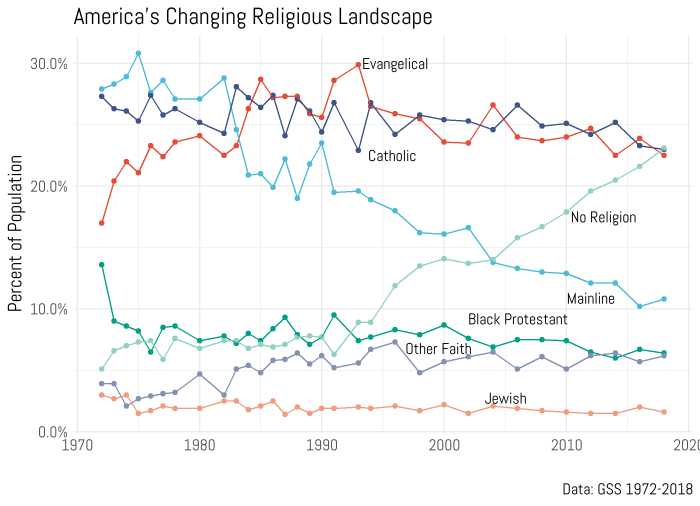
Catholic respondents fell slightly to 23 percent but continue to be one of the largest two religious demographics in the U.S.
The study comes as there has been a rise over the last decade-plus in the number of religiously unaffiliated individuals in the United States. According to Burge’s data, the religious “nones” comprised just 5 percent when the GSS was first conducted in 1972. Today, religious "nones" are just under a quarter of the GSS data.
“The ‘nones’ are not slowing down,” Burge told The Christian Post in an email. “Their share of the population is continuing to climb ~1 percent every two years and has done so for the past 15 years or so. If current trends keep up then they will be the largest group in the United States in the next five years, statistically.”
While the share of “nones” continues to rise, the number of Catholics and Protestants have dwindled over the years. The two groups were once the two largest religious groups in the nation. In 1972, the two groups comprised over 25 percent of the GSS tally each.
Catholics, specifically, are down three percentage points in the last four years, according to Burge’s analysis.
As for evangelicals, their peak came in the early 1990s when the number of evangelicals topped 30 percent.
Black Protestants continue to make up less than 10 percent and have not risen above 10 percent since 1972.
In a tweet, Burge said that while he doesn’t put much stock in one-year shifts, he stressed that the larger trends are “instructive.”
Last year, polling from ABC News and The Washington Post found that between 2003 and 2017, the percentage of adult Americans that profess “no religion” grew from 12 percent to 21 percent.
At the same time, the white evangelical portion of the population has shrunk from 21 percent to 13 percent.
Also, that poll found that 36 percent of Americans identified as members of Protestant faith (including evangelicals).
In 2003, the polling found that 50 percent identified as a member of Protestant faith. Meanwhile, the share of those who self-identify as Catholics (22 percent in 2017) held steady over those years.
Follow Samuel Smith on Twitter: @IamSamSmith
or Facebook: SamuelSmithCP<
















